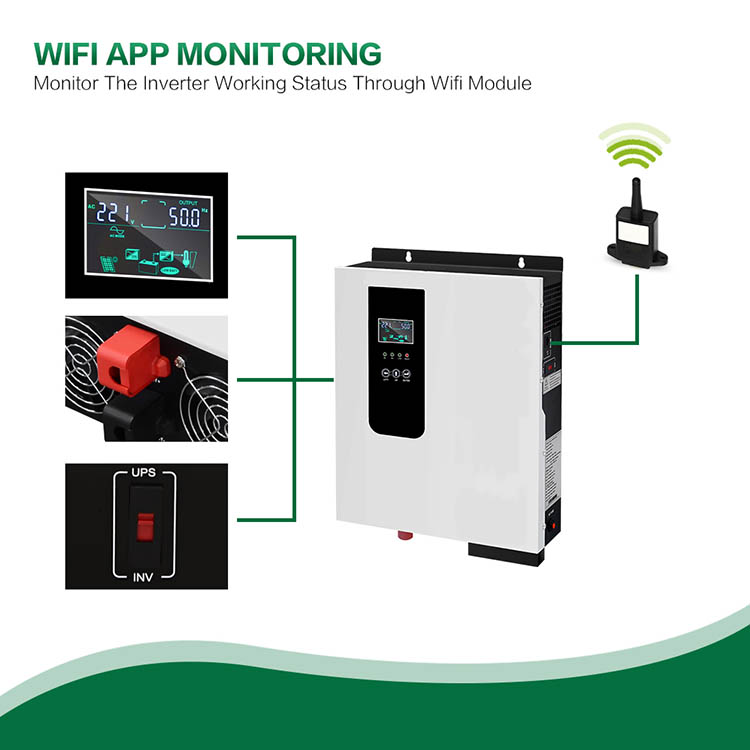Why use solar inverters in photovoltaic power generation systems?
 Jul 09,2022
Jul 09,2022

 Rekesun
Rekesun
A solar inverter is a device that converts direct current to alternating current. Solar cells will generate DC power in sunlight, and the DC power stored in the battery is also DC power. However, the DC power supply system has great limitations. AC loads such as fluorescent lamps, TVs, refrigerators, and electric fans in daily life cannot be powered by DC power. For photovoltaic power generation to be widely used in our daily life, solar inverters that can convert direct current into alternating current are indispensable.
As an important part of photovoltaic power generation, the solar inverter is mainly used to convert the direct current generated by photovoltaic modules into alternating current. The solar inverter not only has the function of DC to AC conversion, but also has the function of maximizing the performance of the solar cell and the function of system fault protection.

The output of the solar cell module varies with the intensity of solar radiation and the temperature of the solar cell module itself (chip temperature). In addition, since the solar cell module has the characteristic that the voltage decreases with the increase of the current, there is an optimum operating point where the maximum power can be obtained. The intensity of solar radiation is changing, and obviously the optimal working point is also changing. Relative to these changes, the operating point of the solar cell module is always at the maximum power point, and the system always obtains the maximum power output from the solar cell module. This control is the maximum power tracking control. The biggest feature of solar inverters for power generation systems is that they include the function of maximum power point tracking (MPPT).
After sunrise in the morning, the intensity of solar radiation increases gradually, and the output of the solar cell also increases. When the output power required for the operation of the solar inverter is reached, the inverter starts to run automatically. After entering into operation, the solar inverter will monitor the output of the solar cell module all the time. As long as the output power of the solar cell module is greater than the output power required for the operation of the solar inverter, the solar inverter will continue to run; until the sunset stops, The inverter can run even on cloudy and rainy days. When the output of the solar cell module becomes smaller and the output of the solar inverter is close to 0, the inverter will form a standby state.



 Home
Home What are the roles of solar inverters in communication power systems?
What are the roles of solar inverters in communication power systems? 







 syplighting.en.alibaba.com
syplighting.en.alibaba.com



